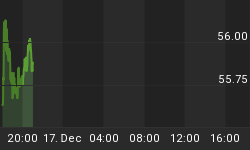With consumer confidence now testing generational lows, our politicians are never the less continuously assuring us that the economy is strong, and that there is no cause for worry.
Although it is standard procedure for governments to soothe their citizenry with placebo politics in order to avoid panic and uprising, there is a line after which such a campaign is counterproductive. In fact, misleading statements about financial security are potentially dangerous to the country's long term economic well being, and potentially toxic to investors.
Economic and financial statistics are the battleground over which the war of perception is fought. But as the saying goes: "Figures lie, and liars figure." Politicians are masters of the selected use of statistics to lend credibility to their statements. In reality, the numbers often mask the truth.
A year ago, financial markets hovered near nominal highs, retail sales appeared to be growing and real estate prices were near historic highs. Wall Street and Washington made the most of these 'over-the-top' numbers to foster a sense of economic invincibility. With the national gaze lifted towards sunny skies, few noticed the danger of the mortgage crisis, which lay below like a tiger trap.
But like a poorly dubbed martial arts film, the average American is beginning to notice that the dialogue does not match the on-screen action. As a result, many people are a developing a deep suspicion of statistics, which over time will greatly diminish the government's credibility. In the coming economic crisis, this loss of credibility may have severe consequences.
One vital statistic in the perception battle is GDP, which is the total of all spending on goods and services within our economy, and is used as the key measure of national wealth generation. It may be surprising to some, but GDP includes money spent on clearing up natural disasters that include hurricane relief and pollution control. How such expenditures, which really only replace what has been lost, increase national wealth, is beyond me.
Unemployment figures are another worry. Government adjustments for seasonal and population changes are acceptable. But excluding from the unemployment rolls those who are neither actively seeking jobs nor the 'long-term' unemployed is not.
Perhaps, the greatest area of concern about statistical manipulation is the measurement of inflation, or Consumer Price Index (CPI). By manipulating this single statistic the government can miraculously transform rising prices into economic growth.
Today, the Department of Labor sets so-called "core" inflation, excluding food and energy, at 2.2 percent. Even "headline" inflation, including food and energy, is published officially at only some 4 percent. The problem is that these figures bear very little relation to the reality of price increases experienced on Main Street, which some estimate to be in excess of 10 percent.
Statisticians assign different weights to the elements comprising the CPI that are often not reflective of the spending habits of ordinary citizens. For example, housing maintenance (including heating oil), a major expenditure, is given only a small part in the Index's makeup. In addition, the re-pricing of items such as automobiles to allow for added 'hedonistic" features such as enhanced "value for money" is wide open to varying judgments. How these statistical decisions are made is really anyone's guess. But it is absurd to assume that the government's overwhelming interest in reporting low inflation does not influence the final numbers.
The financial consequences for investors can be severe. For example, the Dow Jones Industrial Index, against which many investment returns are measured, closed at a nominal high of 14,093 on October 12, 2007. The media reported it as a sign of good things to come. On May 23, 2008, the Dow closed at 12,480 -- off a bit, but apparently not too bad. However, the Dow close of 12,480, if adjusted for the official CPI, is worth not 12,480, but only 9,856 when compared with its previous market cycle high, of 11,723, in the year 2000.
Worse still, if adjusted for the more reasonable, but conservative, inflation rate of 8 percent, the recent close of 12,480 becomes the equivalent of only 6,742 in the year 2000. What looks like a nominal gain of some 757 points or 6.4 percent is, in fact, a real loss of 4,981 points or some 42 percent over those eight years!
One set of statistics that is impossible to distort are currency exchange rates, which have provided a somber report card on America's economic fortunes. Not able to manipulate these numbers, the authorities instead distort their meaning, and have attempted to convince Americans that a weak dollar is in the national interest.
Those wise enough to ignore the spin, and see the falling dollar for what it is, namely a loss of wealth, have invested in good companies listed on the stock exchanges of producer nations, such as Australia, Canada and Switzerland, with appreciating currencies. Such moves have greatly enhanced wealth and protected those investors against further dollar erosion.
For a more in depth analysis of our financial problems and the inherent dangers they pose for the U.S. economy and U.S. dollar denominated investments, read Peter Schiff's book "Crash Proof: How to Profit from the Coming Economic Collapse." Click here to order a copy today.
More importantly, don't wait for reality to set in. Protect your wealth and preserve your purchasing power before it's too late. Discover the best way to buy gold at www.goldyoucanfold.com, download our free research report on the powerful case for investing in foreign equities available at www.researchreportone.com, and subscribe to our free, on-line investment newsletter at http://www.europac.net/newsletter/newsletter.asp.
















